The Middle Ages
Picture:Toshihisa Yoshida
 Looking to secure military funds, the daimyo (feudal lords) of the Sengoku period competed for development of silver mines.
Looking to secure military funds, the daimyo (feudal lords) of the Sengoku period competed for development of silver mines.
“He who rules Ikuno will rule over the whole country.”
Once home to one of Japan’s leading silver mines, Ikuno is located in the drainage divide that separates the Ichikawa River heading to the Seto Inland Sea and the Maruyama River flowing toward the Sea of Japan. At more than 300 meters above sea level, the basin included the town called Kanaya and was a populated area.
Legend states that the silver mine was first discovered at Ikuno in the year 807 toward the end of the Nara period. However, because mention of Ikuno’s silver would not reappear for another 700 years, the common theory is that mining at Ikuno began in 1542 during the Sengoku period.
Around this time, the ground-breaking refining process known as cupellation arrived from China, leading to an increase in silver production. The discovery of numerous silver veins led the Sengoku daimyo (feudal lords) to compete for the development and securing of the mine in order to secure military funds. The daimyo who claimed the Ikuno Silver Mine would become one of the most powerful daimyo of the time.
In October 1577 during the Azuchi-Momoyama period, an aide named Kanbei Kuroda (Yoshitaka Kuroda), serving under Hideyoshi Hashiba (Toyotomi) in the service of Nobunaga Oda, advocates securing the Ikuno Silver Mine. As a result of the attack on Tajima in 1580, Hideyoshi Toyotomi captured the Ikuno Silver Mine as well as Takeda-jo Castle and Izushi-jo Castle. Now in control of the Ikuno Silver Mine, Nobunaga Oda gives Hideyoshi the mine as his territory.
Shikama-tsu Port—an important port for transport ships since ancient times that also developed steadily throughout the ages—became deeply entwined with the Ikuno Silver Mine as the gateway to the sea where ore from Ikuno was shipped to Kyoto.
An essential pillar in the foundation of Oda and Toyotomi’s administration, the Ikuno Silver Mine came under the rule of Ieyasu Tokugawa following the Battle of Sekigahara in 1600. Ieyasu, the new shogun of Japan, claimed the Ikuno area in addition to the Sado and Iwami areas as his territory and undertook active management of the mines.
In this way, the Ikuno Silver Mine directly supported the prosperity of the Tokugawa shogunate. However, by the end of the late Edo period, due to such problems as a lack of manpower, limited amounts of mining possible through manual labor, and ventilation and groundwater drainage issues, the Ikuno Silver Mine was mostly closed. Buried in water and shut in darkness, the mine waited quietly until a wave of modernization swept across the country in the Meiji period.
The Modern Era
Ikuno Silver Mine
 A dream road connecting the Ikuno Silver Mine and Shikama-tsu Port
A dream road connecting the Ikuno Silver Mine and Shikama-tsu Port
Created exclusively for horse-drawn carriages in the early Meiji period, Gin no Bashamichi (the Old Silver Mine Carriage Road) spanned some 49 kilometers between the Ikuno Silver Mine and Shikama-tsu Port (now Himeji Port). At the time, the road was called “Ikuno Ginzando” (the Ikuno Silver Mine Road) and “Ikuno Kozanryo Bashamichi” (the Ikuno Silver Mine Horse-Drawn Carriage Road).
In 1868, the new Meiji government nationalized the Ikuno Silver Mine with the aim of increasing silver production through modernization by introducing foreign engineers and modern equipment. This was based on the knowledge that silver was an important financial resource during the eras of Oda, Toyotomi, and Tokugawa, and remained so into the second half of the Meiji period. While many mines are located in mountainous regions, Ikuno is blessed by its geographical location. Situated close to large distribution hubs like the castle town of Himeji and Shikama-tsu Port, the Ikuno Silver Mine is located amid lowland topography along the Ichikawa River connecting Ikuno with the Seto Inland Sea.
These factors worked together to boost production activities at the mine. However, at that time, the only way to reach Himeji was through narrow, winding roads. The only way to reach the city was along these winding roads with baggage carried either on horseback or by the travelers themselves, or down the Ichikawa River by small flatboat.
Because goods needed to be shipped on foot, transportation costs were high, and securing a new means of transporting the large amounts of material to the Ikuno Silver Mine for advancing mechanization or carrying refined silver and other ores from the mine was a major problem.
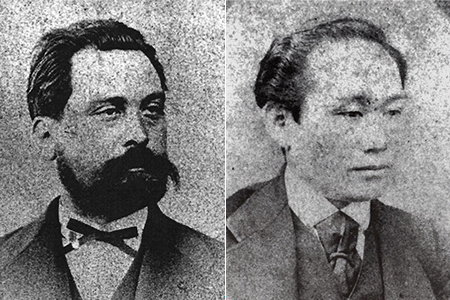
Jean Francisque Coignet / Moriaki Asakura
Photo provided by the Asago City Board of Education
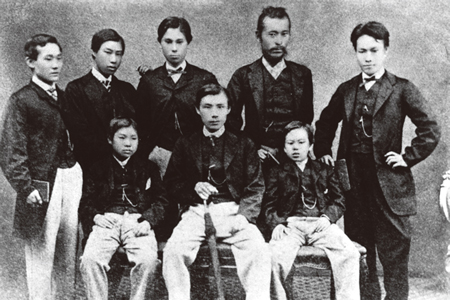
The Satsuma Students
 One of three available methods
One of three available methods
In looking to connect the Ikuno Silver Mine and Shikama-tsu Port (now Himeji Port), three methods of transportation were examined. The first was transport boats along the Ichikawa River. At the time, flatboats transported goods from the middle reaches of the river, but the construction costs such as widening the river were enormous, and drought was also a concern. The second option was railroad, but transported volumes with this method also required a great deal of expense. Finally, a third option was developed. Not constructing from scratch, plans for a horse-drawn carriageway were developed with old roads being renovated into a state-of-the-art means of transportation. Construction costs would be considerably less than either railway or transportation by boat, and shipping costs by carriage would be only one-eighth that of carrying goods on foot alone.
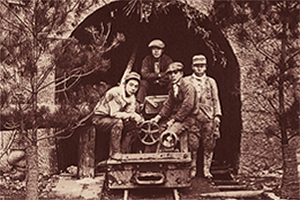
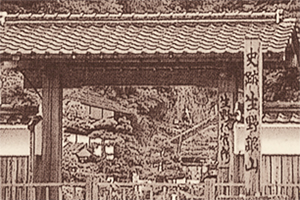
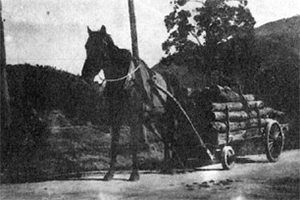
 Japan’s first major construction project
Japan’s first major construction project
Construction of Gin no Bashamichi began in July 1873 with Leon Sisley selected as chief engineer by Moriaki Asakura, director of the Ikuno Silver Mine, and Jean Francisque Coignet, a French mining engineer. Placed 60 cm higher than the surrounding rice paddies, Gin no Bashamichi employed civil engineering technology introduced from Europe—the macadam road construction—where first rough stones, then smaller stones, and finally gravel are laid. This allowed for the creation of a strong road for carriages to run smoothly on with good drainage that is not affected by weather such as rain. Completed in 1876, construction of Gin no Bashamichi, heralded as “Japan’s first high-speed industrial road,” took three years. At the time, horse-drawn carriages were two-wheeled wooden vehicles. Even with small loads, the shafts attached to the cargo area meant the carriages required large turning radiuses. Around the middle of the Taisho period, an additional axle with two small wheels was attached to the front of the carriage for greater utilization of energy.
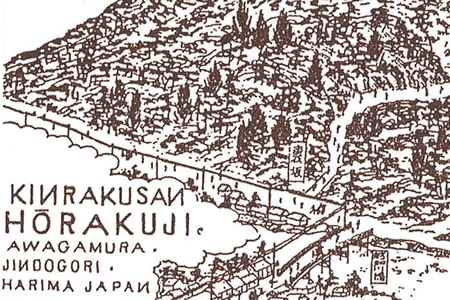
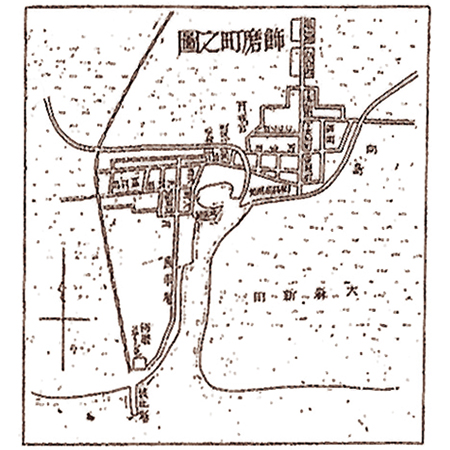
 A pioneering area in modern Japan
A pioneering area in modern Japan
In 1895, the Bantan Railway (now the JR Bantan Line) opened between Himeji and Ikuno, connecting the Ikuno Silver Mine and Shikama-tsu Port by train. With a developed distribution network comparable to the larger cities in Japan, the Ichikawa River basin in the early Meiji area acted as a main thoroughfare of distribution. As such, the area was considered a highly influential area that pioneered the industrial economy development of modern Japan. Gin no Bashamichi’s usefulness gradually declined after the railway opened, and although it was abandoned as a horse-drawn carriageway in 1920, the road has undergone various renovations and route changes and being used even today as a prefectural road or national highway.
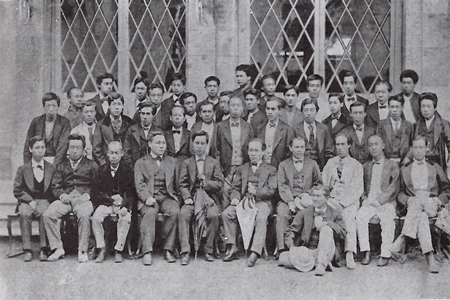
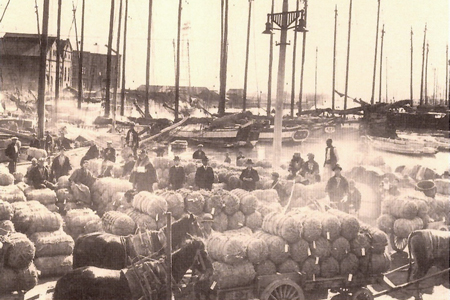
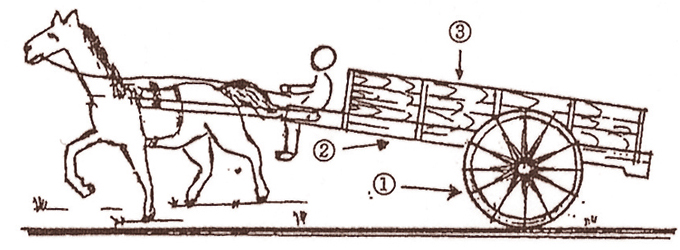
The Present
 The fate of the Ikuno Silver Mine and Gin no Bashamichi
The fate of the Ikuno Silver Mine and Gin no Bashamichi
Gin no Bashamichi continues today to be one of Japan’s modern industrial heritages. In 2012, the Gin no Bashamichi Project was registered as “Heritage for the Future” by the National Federation of UNESCO Associations in Japan. Today, various activities are held for the promotion, development, and creation of communities for not only the Ikuno Silver Mine and Gin no Bashamichi but also surrounding areas in an effort to revitalize the regions and as efforts to better handle an aging society.



